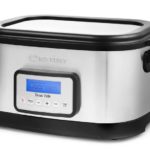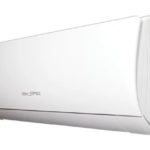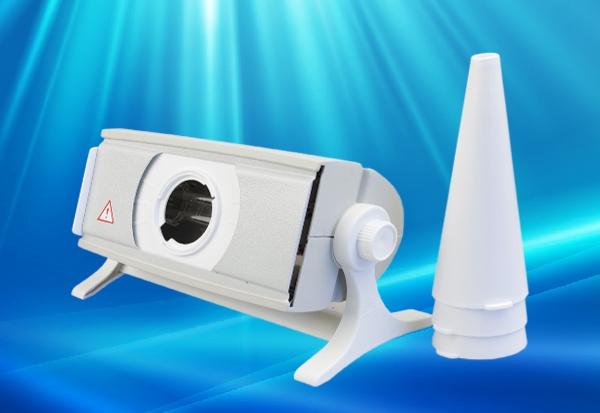Electric water activator AP 1: instructions for use

prom.ua
If you are interested in what “living” and “dead” water are, what electric activators for water are and their design, then read on - about “living” and “dead” water, the first production of “living” water, the design of electric activators, how they are used use.
“Living” and “dead” water – what is it? Modern concepts of “living” and “dead” water appeared relatively recently. However, these concepts were often mentioned in fairy tales, traditions, legends, ancient textbooks, and manuals. “Living” and “dead” water gained particular popularity in the Middle Ages, when it was believed that they had magical and special healing properties. But what is “living” and “dead” water in the modern sense? One of the oldest recorded methods of obtaining "living" water was as follows:
The first step is to keep the drinking water in a dark room for several hours to allow it to settle. Next, it needs to be boiled and cooled quickly. For cooling, snow/snowdrift was used (“living” water was usually prepared in winter) or ice was added. After the water you need to infuse silicon. During this time, harmful impurities will settle at the bottom. The water was again poured into another container without touching the unnecessary bottom layer. The drained water was frozen. When the first layer of ice appeared on it, it was removed and thrown away. Then the liquid was frozen again, but only by two-thirds. A hole was made in the newly formed layer of ice, through which the finished liquid was drained. The result was pure water with a high concentration of salts.
Today, you can make “living/dead” water from ordinary water in an hour or less. For this purpose, specialized devices are used - electrical activators. In the CIS countries, the most popular is the AP-1 activator from the Belarusian manufacturer Aquapribor.
What is “living” water in the scientific understanding. This is water with low acidity, an alkaline structure and a large amount of salts. Such water is called catholyte. Such water is stored without losing its properties for up to 7 days in a completely sealed container in a dark room. “Living” water accelerates biological processes - metabolism, digestion, tissue regeneration/healing, stimulates the immune system. Because of this, it is recommended to use it in almost any case - to improve appetite, for serious injuries, to increase blood pressure, as well as for prevention and stimulation of the immune system for healthy people.
What is “dead” water in the scientific understanding. In turn, “dead” water is the opposite of “living”. It has a positive potential, low salt content and an acidic structure. The official name in the scientific community is anolyte. If catholyte accelerates biological processes, then anolyte slows them down. Because of this, “dead” water can be used as an antiseptic or preservative. It is recommended to be used for muscle/joint pain, cramps, intestinal disorders, skin diseases, and also as a preventive measure for colds.
Design of an activator for water. Structural elements of any electric activator for water:

prom.ua
- Main plastic container
- Quartz glass
- Power supply and its wire
- Cover with 4 electrodes attached to it
To use such units, you will need water from which catholyte and anolyte will be obtained, the electric activator itself and a household outlet (classic voltage 220 Volts).
Before purchasing an electric water activator, make sure that the device is fully certified. The kit must include a certificate indicating the second or higher class of the permitted combination of water and electricity (following the state standard) and a document confirming hygienic safety.
A non-original device without these documents can harm your health.
Step-by-step instructions for using the AP-1 water activator. The device itself comes with detailed instructions for use, which describe how the device works and how to care for it. The instructions also explain what water acidity is, what pH value is best to use in a particular situation (a table with the dependence of concentration) and how to obtain a specific acidity value.
If you have lost the instructions, then you will have the following information:
pH is how acidic the water is (how much hydrogen it contains). The indicator of ordinary drinking water is within 7-8 units. “Living” water, which accelerates biological processes, is 8-10, “dead” water is 3-6.
How to use the electric activator for water AP-1, how to use the water activator. First of all, you need to remove the top cover of the device with the electrodes on it. Then place a ceramic glass inside the container, placing it in the center. Next, pour regular tap water into the glass, you need to fill it completely. Afterwards, you need to pour the same water into the container itself, but the water level in the container should be 1-2 centimeters lower than the height of the glass.Replace the electric activator cover. Make sure that the pointer arrows are located directly opposite each other, the black sticks (anodes) should be inside the ceramic glass, and the light sticks (cathodes) should be outside, in a plastic container. In the end, you just need to insert the plug from the power supply into a socket (voltage 220 Volts) and remember the time when you turned on the activator. After 10-50 minutes, the device will finish concentrating the water, and as a result you will have “live” and “dead” water. The completion of work will be signaled by several special indicators located on the electrodes.
Longer operation of the electric activator will provide a more concentrated water solution. In different cases, water of different concentrations is more suitable.
When the electric activator is finished working, first remove the plug from the socket. Next, carefully remove the top cover of the device (it must not be turned over, because this may disrupt the correct position of the electrodes - the activator will not work correctly). Remove the ceramic glass from the container and use the water for its intended purpose.
There will be “dead” water in a ceramic glass, and “live” water in a plastic container.





